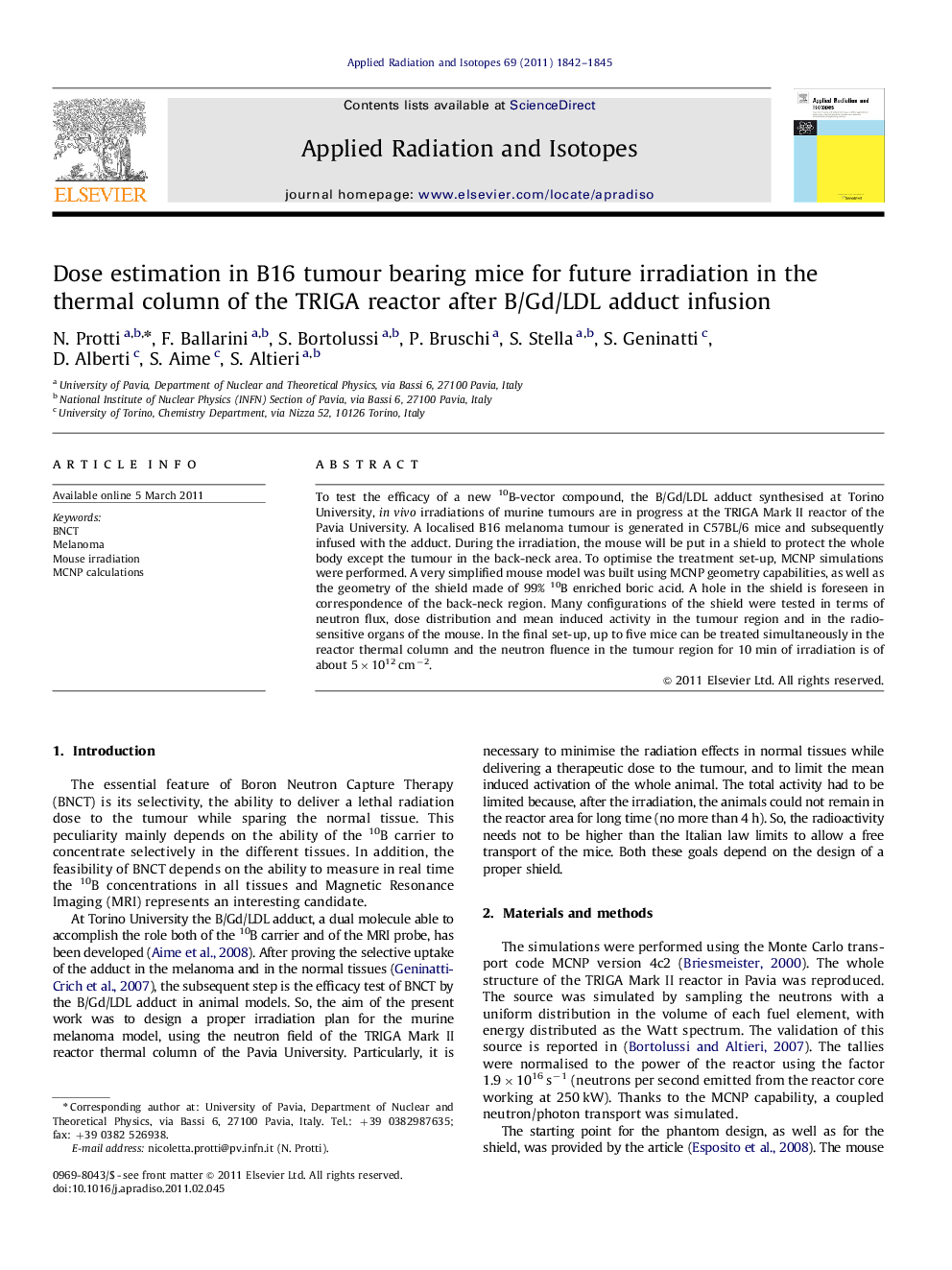| Article ID | Journal | Published Year | Pages | File Type |
|---|---|---|---|---|
| 1877786 | Applied Radiation and Isotopes | 2011 | 4 Pages |
To test the efficacy of a new 10B-vector compound, the B/Gd/LDL adduct synthesised at Torino University, in vivo irradiations of murine tumours are in progress at the TRIGA Mark II reactor of the Pavia University. A localised B16 melanoma tumour is generated in C57BL/6 mice and subsequently infused with the adduct. During the irradiation, the mouse will be put in a shield to protect the whole body except the tumour in the back-neck area. To optimise the treatment set-up, MCNP simulations were performed. A very simplified mouse model was built using MCNP geometry capabilities, as well as the geometry of the shield made of 99% 10B enriched boric acid. A hole in the shield is foreseen in correspondence of the back-neck region. Many configurations of the shield were tested in terms of neutron flux, dose distribution and mean induced activity in the tumour region and in the radiosensitive organs of the mouse. In the final set-up, up to five mice can be treated simultaneously in the reactor thermal column and the neutron fluence in the tumour region for 10 min of irradiation is of about 5×1012 cm−2.
